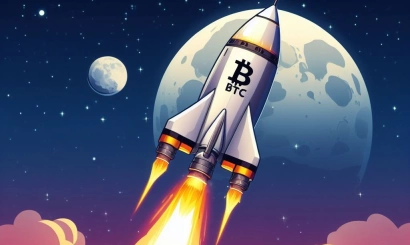A miner on a primitive device earned 6 bitcoins. How it is possible
Experts explained how a private miner managed to get a reward for a found block with barely noticeable computing power of his devices
A lucky private miner, with barely a fraction of the computing power in the bitcoin network, was awarded 6.35 BTC for finding a block numbered 772,793 in the first cryptocurrency's blockchain.
To add a block to the Proof-of-Work blockchain (on which bitcoin runs), a miner must be the first to find a valid hash of that block, using the computing power of his device to do so. Machines designed specifically to perform this function (ASIC) are capable of calculating trillions of unique hashes every second.
Typically, blocks are mined by large pools combining the power of thousands of participating user devices. The largest of them are Foundry, AntPool, and Binance's own pool.
At the moment the block was added to the blockchain, the total bitcoin hash rate was just over 269 EH/s (exascapes per second), which means that a single miner's hash rate of 10 TH/s (terraches per second) was only 0.000000037% of the total computing power of the network.
Atypical case
This is an extremely atypical case, BitCluster co-founder Sergey Arestov commented on the event. One miner privately "can work for 30 years and not pick up the right hash during that time," while consuming power and generating a resource of equipment. The risks of finding nothing and suffering a loss are much greater.
According to BitRiver financial analyst Vladislav Antonov, getting a reward for a found block while solo mining is "like hitting the jackpot. Now the hash rate of the network is 283 million TH/s against 10.6 TH/s capacity of an unknown miner. In theory, with such parameters of the equipment it should mine one block out of almost 27 thousand mined blocks. Considering that about 900 BTC are mined per day, that's about one block in 81 years, the analyst concludes.
Solo mining can be used when mining new coins where network capacity is low and one person's equipment takes a significant portion of the whole network computing power, Antonov explains. With pools, the probability of remuneration increases many times over, but the user receives only a share of the remuneration, proportionally calculated from the entire computing power of the pool.
Bitcointalk forum users, discussing a lucky miner, concluded that his setup consisted of four rudimentary USB miners, each of which produced no more than 3 TH/s and cost about $200.
"It's hard to find equipment under a 10.6 TH/s hash rate based on specs. There is an old ASIC Antminer S9 with parameters 30% better. Its performance is up to 14 TH/s," Antonov comments
Network complexity
A year ago, in less than two weeks there were three cases where solo miners successfully mined blocks, with the third one having a hash rate of only 8.3 TH/s compared to a total network hash rate of 190,719,350 TH/s. The probability of receiving a reward per block at these parameters is 1 in 23 million.
Since the Proof-of-Work mining system is based on the random generation of hash values and response mechanisms, there is no unique strategy for differently powered devices. Thus, rare instances of single miners' luck are likely, and will likely continue to occur in the future.
The difficulty of mining bitcoin on January 16 set a new record. As a result of another recalculation, it renewed its all-time high, rising to 37.59T, according to BTC.com. The average block time is now 9 min 4 s. Bitcoin's hash rate (the total processing power of the equipment mining the cryptocurrency) at the current complexity is expected to be 269.02 EH/s, which is also close to the maximum values.
As Antonov explains, the price of cryptocurrency mining equipment has plummeted due to the bitcoin's fall to $15,476. Despite the energy crisis and uncertainty in financial markets, investors chose to invest in mining equipment in anticipation of bitcoin's recovery and a renewed historical high before halving in 2024. In previous market cycles, the bitcoin exchange rate would begin to rise a year before miners' fees were reduced.
- "Gandalf lost." What is known about the case against Bitzlato
- BitKeep will begin compensating victims of the $8 million hack starting in February
- OKX says it is "100% clean" in securing customer assets
- The Exit Point. Why crypto traders began to fix profits
- Europol: €1 billion of criminally derived assets passed through Bitzlato
- The rise of bitcoin and the bankruptcy of Genesis. Highlights of the week






